AVS Forum’s Theater of the Decade - Part 2
Interview with Rob Hahn - Designing & Building the Theater
2 September 2021
Case Studies

Part 2: Designing & Building the Theater
You can read part 1 to learn more about Rob's background and his aspiration for this project.
How did you hear about Keith Yates Design?
In doing my research, I visited many home theaters across the country - one of those belonged to Art Sonneborn in Detroit. He had his speaker designer (Mark Seaton) there, and he recommended I contact Keith Yates. I didn’t know who that was, but after doing some digging, I gave him a call, & we set up a meeting in CA.
What convinced you to engage Keith Yates Design for your project and how did that collaboration work out for you and that Team?
I desperately needed a full time (and committed) collaborator. I knew how complicated this process was going to be and I needed someone that was curious, someone I could talk with in great length about the most minute detail, someone who wasn’t afraid to ask questions. We set up a lunch meeting in CA, along with Geoff Franklin of The Projection Room, and spoke for hours about my ideas and plans. Going into a process like this always involves (somewhat) a leap of faith. Having to choose crew members for upcoming film projects has given me some experience in deciding who’d be best to get in the trenches with.
It was clear just after this one meeting that these were the guys to help me realize my dream.
Can you tell us a bit about the planning process with KYD?
Because we were on opposite coasts, Keith decided that we could accomplish much by using GoToMeeting and SketchUp. We worked on the design of the theater, the separate projection room, clean power room, rack room and separate 2-channel listening room for more than a year. Working on films, I’m used to dealing in very minute details (What color should the walls be? What lamp shades should we use? Should that actor’s suit be light blue, black or grey)? Designing and building my theater was very similar to the prep work I do on films.
There were certain aspects of a finished theater I wanted to have. I’ve always hated shoebox theaters, so one of my directives to Keith was that the theater must get wider, closer to the screen. We also worked very hard on the proscenium - for example, should we have a curtain or not? (I decided against it.) Reflections from the screen (during a movie) on the rest of the room were addressed as well, including the choice of the seat fabrics - no shiny material!
We also worked on the distance from the screen to the ‘money seat.’ I wanted ultimate flexibility here which is why I chose the Director’s Choice from Stewart, a four-way, continuously variable masking screen system. In a commercial theater you have a choice of how close or far away you can sit from the screen, but it’s not so easy in a home theater. With 4-way masking I can control the size of the image based on the film content. My feeling is that a 1.33 film like Gone With the Wind should have the same impact as a wide screen film like Lawrence of Arabia. Constant height systems are constraining, so constant area (or variable image size) was the answer for me. Having the flexibility to alter the aspect ratio for every film size was essential.
To accomplish that, I needed a lot of physical height in the room so I could expand the top & bottom masks. The extra height also allows for proper HVAC installation, 10 ceiling speakers for ATMOS, as well as all the soundproofing. For this reason, the height of the room was built into the design from the beginning…

This shot gives a good impression on the room’s height
A word on the seating: There are 3 rows, 5 seats a row. At first we designated the center seat in the 2nd row as the ‘money seat’ but I found that I almost preferred the 3rd row most of the time. Keith adjusted the ‘tuning’ of the room (and the equipment) to accommodate this change.
The front row in my theater is pretty much useless as I didn't design it for viewing reasons. I have it there for perspective and frame of reference. A front row makes it feel more like a regular theater experience (though we've had a couple of occasions where it is used, but those are rare). I could have foregone the first row, but then the 2nd row would subconsciously feel like I was sitting in the front row of a movie theater, something I never ever do, and I thought it wouldn't feel right.
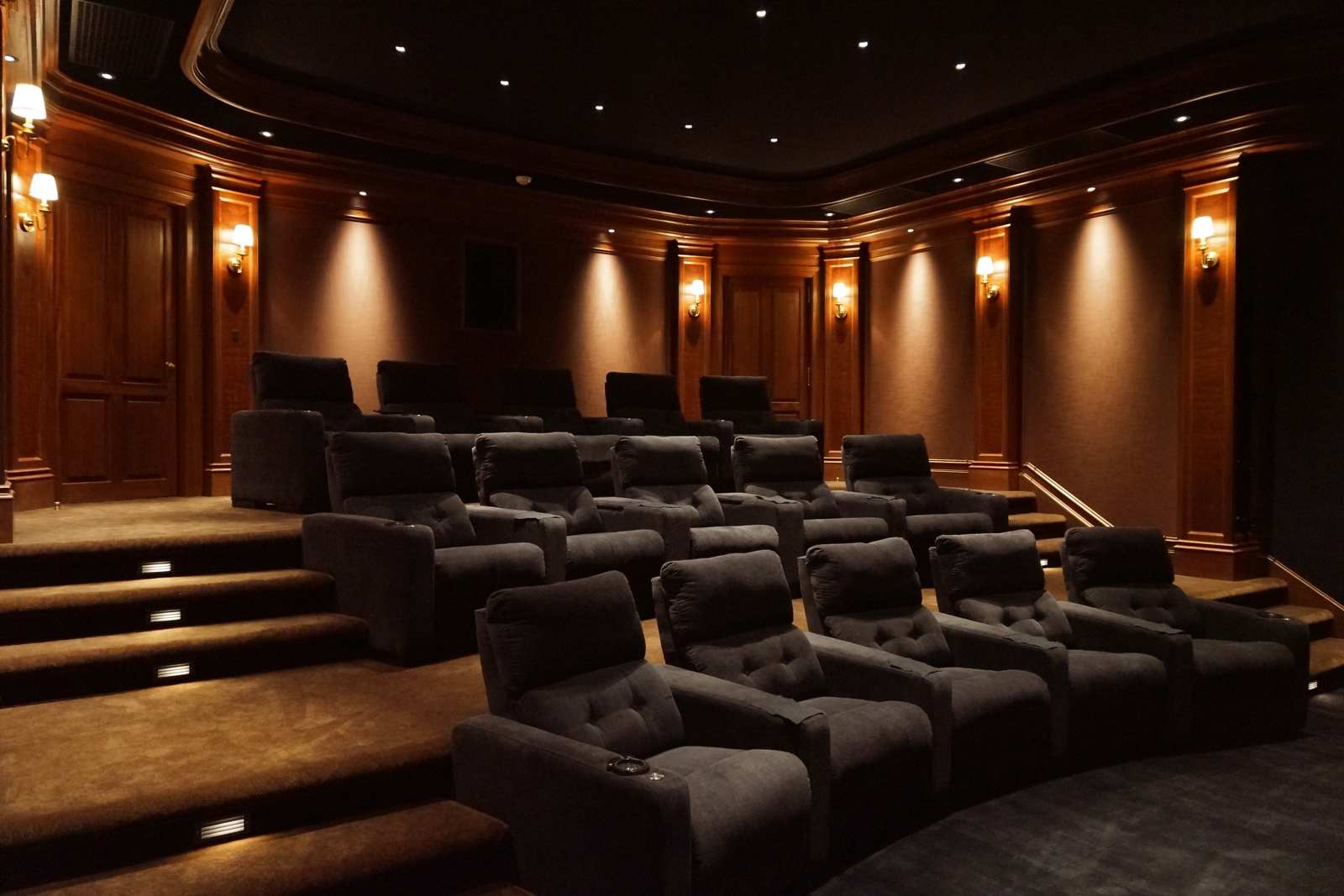
15 seats across 3 rows
Tell us about the build process and the contractor and subs on the project.
First, it should be noted that we were completely remodeling our house. We tore down half of it, and gutted the rest, basically building a new house. The architect firm we hired, Austin Patterson Disston (Mac Patterson) would be responsible for the outer shell where the theater would reside, and Keith Yates Design (KYD) would actually design the interior, as well as the HVAC & electrical systems. Coordination between Mac & Keith was complicated but handled seamlessly by all. The glue would be the contractor…
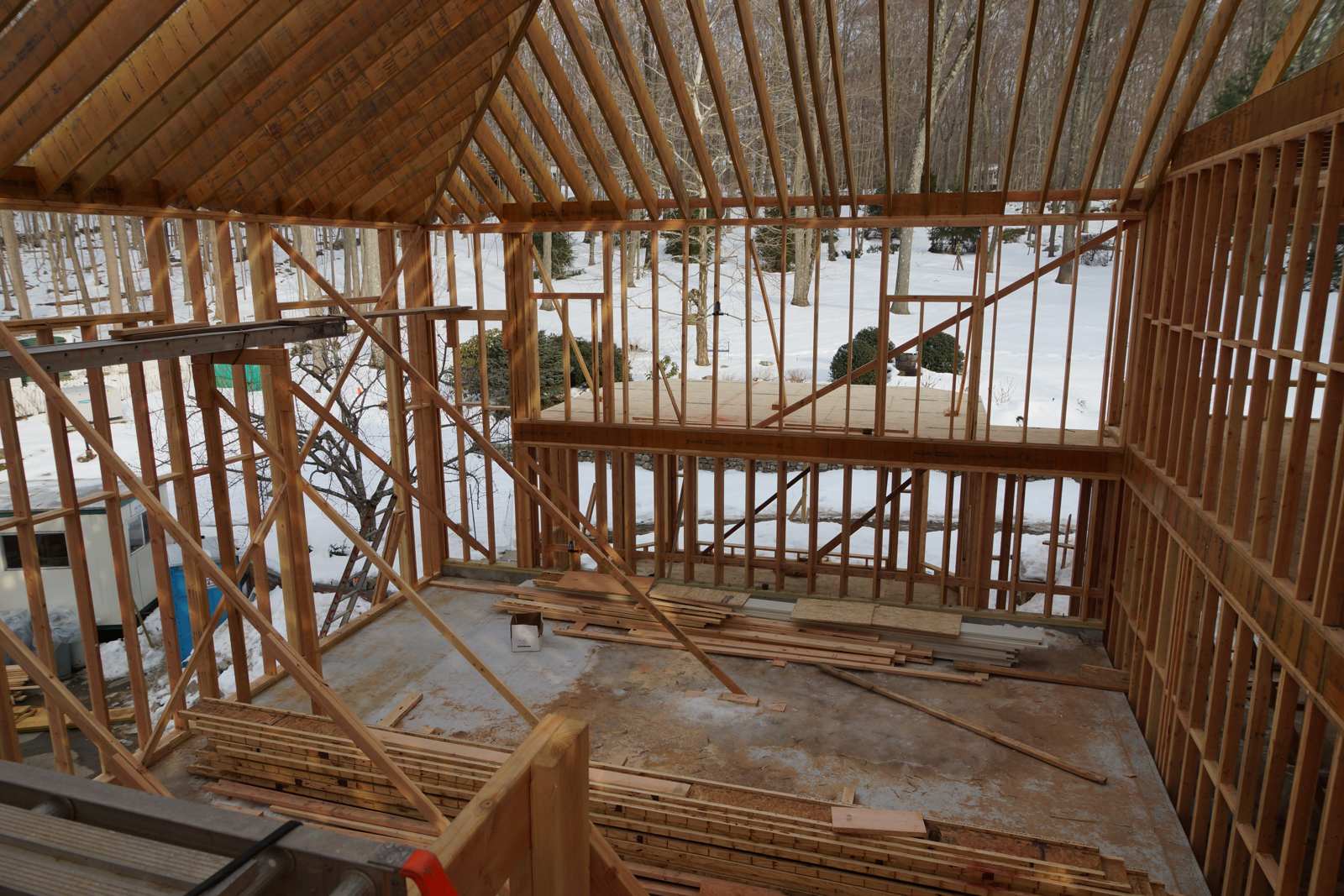
A theater built literally from the ground up
We interviewed many contracting firms and one stood out - Rich Koch from Davenport Contracting. Rick unfortunately passed away just as we were finishing our theater. He was able to see a screening of Gravity with all his crew and the guys from KYD & The Projection Room. It was amazing and very emotional.
Because of the very intense electrical requirements for this project, Keith’s electrical engineer sent multiple pages of questions that we presented to the various electrical contractors vying for the job. We actually recorded the question & answer sessions and sent them all to Keith & his team so they could evaluate who might be best to do this complex job. It was clear who was the winner - Davenport Electrical ( no relation to the contracting firm) with the added benefit that the owner happens to live 2 minutes from our house. That didn’t tip the scales in his favor (his answers did), but it was a great dividend to his hiring.
We chose lots of acoustically transparent fabric to cover the walls & ceiling, and Keith insisted we only use this one guy, Michel Hubert (& his brother-in-law), to do the work. Trouble is, he’s French so we’d have to fly him in, put him up in a hotel. I balked at first - “Keith, you mean there’s _no one_ in the United States that can do this?” He basically said no, we have to use Michel - and boy was he right. The work these two did were flawless - not only that, they were extremely helpful with the other subcontractors during the whole process. For example, when the 19’ Director’s Choice acoustically transparent screen & masking apparatus arrived, we realized we had to build scaffolding outside the house, hoist them up with pulleys and muscle the units through a window. Michel & his brother-in-law were instrumental in helping us figure out the logistics. Even though they weren’t hired to be anywhere near scaffolding, they were right there giving us a hand.
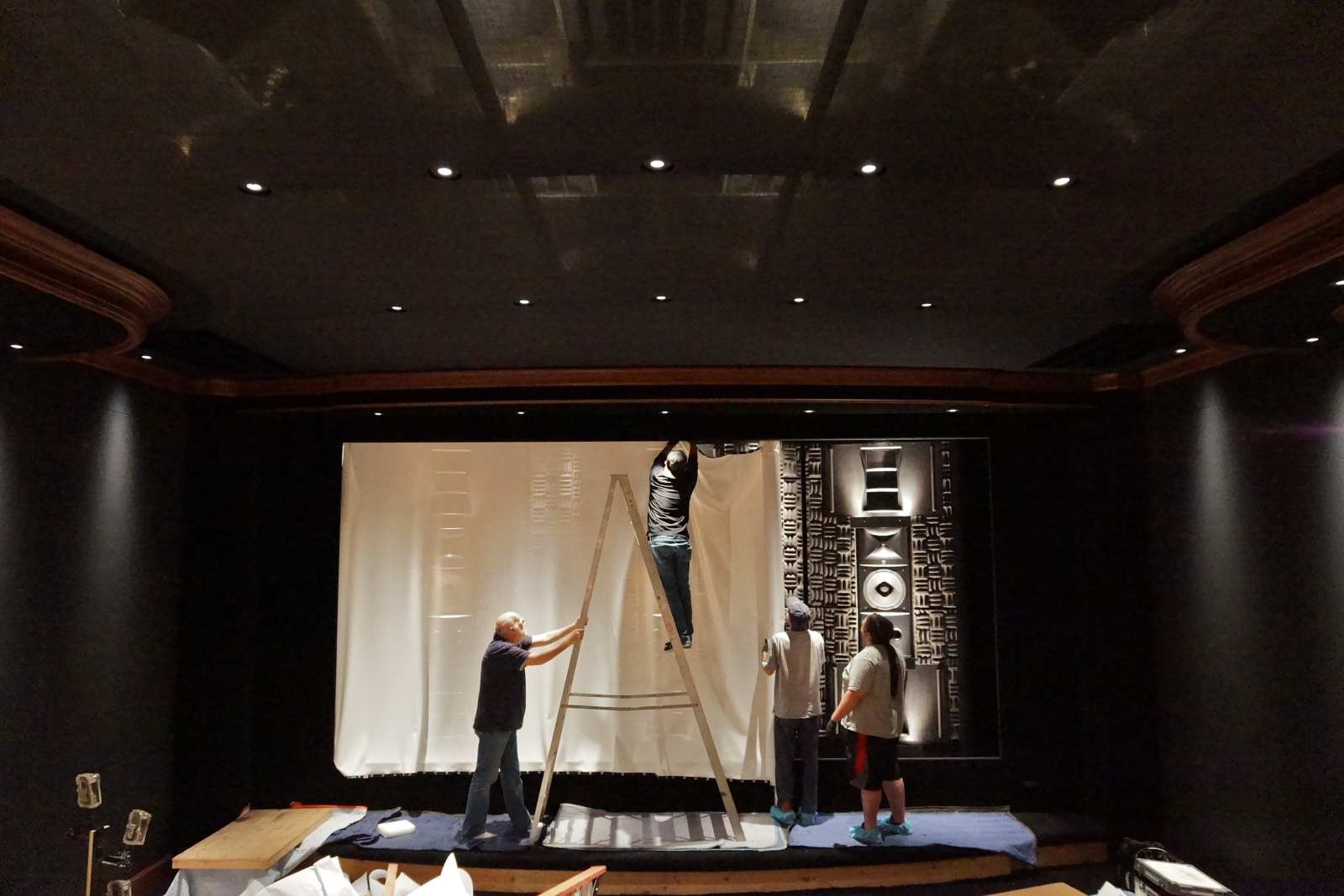
Installing the AT screen
Here’s a quote from Keith Yates:
“We gave Rob's builder 300 sheets of construction drawings. It's tough to even carry a stack that thick. They didn't say, ‘Too much information! Can't you guys compress it into 50 or 80 sheets?’ They said, ‘We're loving the detail, it's gotta be perfect, no excuses, no do-overs, and we can't build it right without this level of detail so keep it coming!’ Same attitude with the specialty subcontractors on Rob's job -- electrical, mechanical, everyone. An amazing project in every way.”
What was your response to your theater being selected for the first and only AVS Forum’s “Home Theater of the Decade” Award?
As you can imagine, I was floored, and so proud of the work that everyone did. I had lurked on AVS Forum for years, collecting threads and quotes from all the great people there who have shared their experiences online. I was trying to pick up as much useful info as I could, years before the right technology even existed. Finally reaching out to some of the members, they generously invited me into their homes (all across the country), allowing me to pump them full of questions, watch their demos, and experience their theaters. I would ask them: What mistakes did they make and what would they do differently?
Do you have any advice for people who might be considering a private screening room?
My main advice would be to try & minimize reflections from the screen by keeping all surrounding materials dark.
Too often I’ve seen very nice looking rooms that have beige walls (and ceilings). An all-black room covered in velour (a bat cave) would be oppressive I think (though I’ve seen a couple of rooms on AVS Forum that are nicely done).
What I did instead was create a hybrid room. The bottom half of the theater is surrounded by black fabric. But then I have moldings and classic columns starting halfway up, wood-stained. In between the columns there is dark brown fabric that is subtly textured. And the carpet is a deep dark brown. The entire ceiling is black fabric. It’s a very warm, inviting room, very serene and comfortable when the lights are up, but when the room goes dark, there are no distractions visually at all. This adds immeasurably to the immersive experience when watching a film.
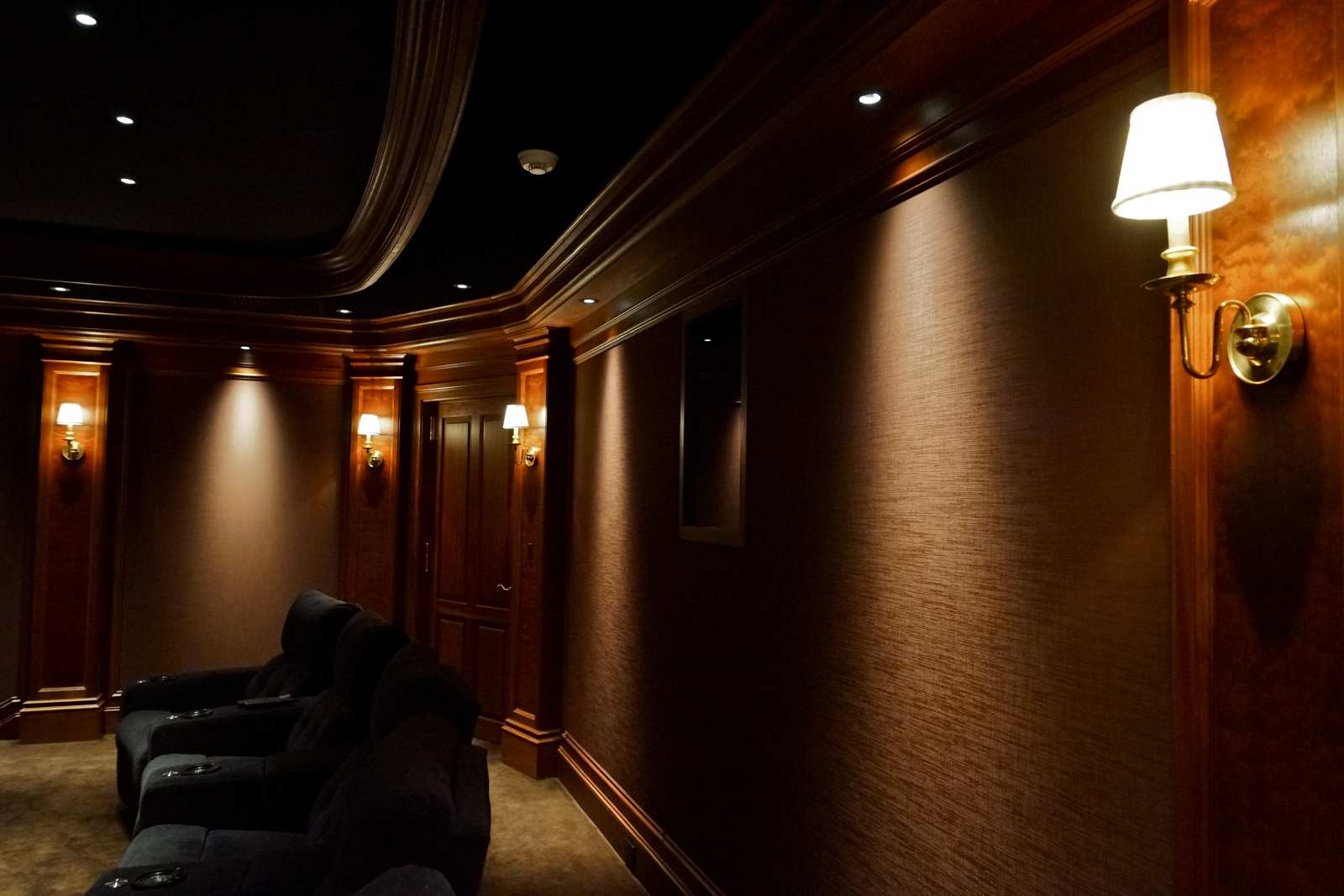
Some decoration details
What qualities about the theater space and its screening capabilities have most surprised you?
The quietness of the room. That is the one aspect I had no preconceived ideas about, except that I wanted a quiet room, of course. But this room is absolutely silent. The effect on the film experience is just astonishing. It allows the amazing Trinnov to properly showcase what it can do, effortlessly. The fact that the room itself doesn’t ring, vibrate or interact negatively with the enormous speaker output allows the sound to just powerfully float into one's psyche, without trauma, without over-assaulting your senses. It also allows you to hear extremely delicate, soft sounds that you would never ever hear in a commercial theater.
As I mentioned above, you know that any sound you are hearing is not coming from outside - it must be coming from the movie. Knowing that increases your immersion into the film’s story. Coupled with how beautifully the Trinnov can direct and recreate the sound field, it results in a sound experience I’ve never experienced in any other theater, anywhere.
The other surprising quality is the quality of the air in the theater.
Keith insisted on a complete exchange of air eight times an hour, more than in a hospital. The theater is almost hermetically sealed.
To enter it you have to go through two 3" thick 300-lb doors.
You open the first door and enter a little enclosed space, an airlock maybe 4' wide, 2 3/4' deep (the space is irregular, kinda trapezoidal).
The second 300-lb door gets you into the theater.
We use double or triple weatherstripping on the sides of the jam, and on the bottom of the door there's a metal weatherstrip that automatically pushes down against the carpet when the door is shut, completing the seal.
When you close both doors, you can hear the air whooshing out of the room - it's pretty stunning.
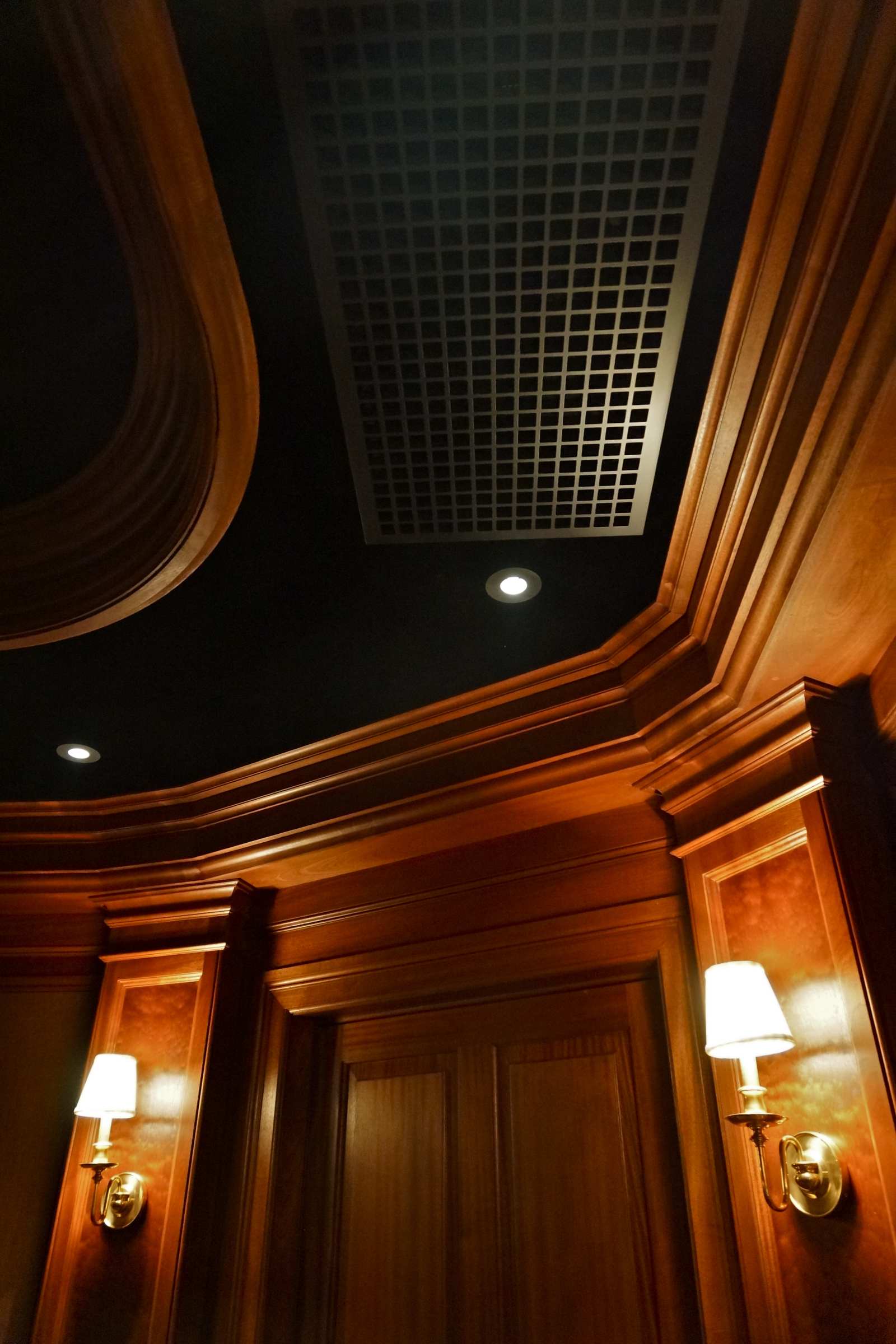
Air flows through the room more than in an hospital
For that reason, it was crucial to make sure the air in the theater doesn’t get stale. Because of the filtration and high volume of outside air, it smells just wonderful inside - every time we go in, that aspect surprises us.
As a professional Director of Photography, how does the image and overall experience of your theater compare to what you were exposed to previously, professionally, and personally?
I don’t mean to sound too prideful, but it’s the best movie theater I’ve ever been in.
Every single time my wife & I enter, we are surprised. “This is in our house? How can that be?” We never take it for granted. I’ve been in some great commercial theaters of course, but there’s always some aspect that isn’t right. The projection might be good - the bulb is bright, it’s in focus, but the sound is so loud that it hurts your ears. Or the sound system is extraordinary, but the projector is ever so slightly out of focus - not enough to get up, find the manager, miss the movie and complain, but enough to bother you. Most people wouldn't notice perhaps. But my theory is that when every element is working perfectly, it immeasurably (or even measurably) adds to the overall effect of the film.
In January of 2019, a local theater, the Westport Country Playhouse (supported in the past by Paul Newman & Joanne Woodward) asked me if they could auction off a movie night in my theater for their fundraiser. I suggested they contact Keir Dullea (a local) and ask him if he would agree to attend a screening of 2001: A Space Odyssey (he was the lead actor, for those who don’t know). I would interview him afterwards in the theater, then we’d all have dinner at our house. We decided 10 people would be the limit. Since 2018/2019 was the 50 yr. anniversary of 2001, Keir had been all over the world attending screenings of the film, including Cannes where Christopher Nolan showed a brand new 70mm print of the film.
Somebody bid on the event and we set up the evening. Most of the people had never seen the film on a big screen. Some had never even seen it at all, in any form. My screen is 19’ wide, so it’s certainly appropriately large enough. After the film ended, Keir said, “That’s the single greatest screening of 2001 I’ve ever seen, including opening night in 1968.”
Well that was it for me, hearing that. I still have a smile on my face from that extraordinary evening!

